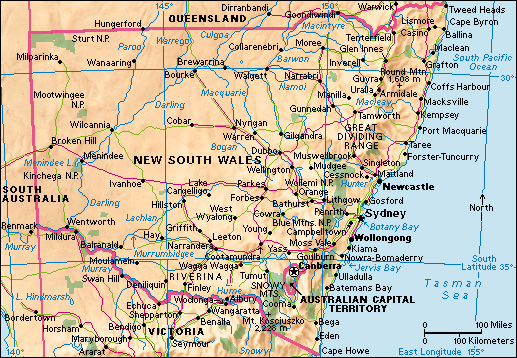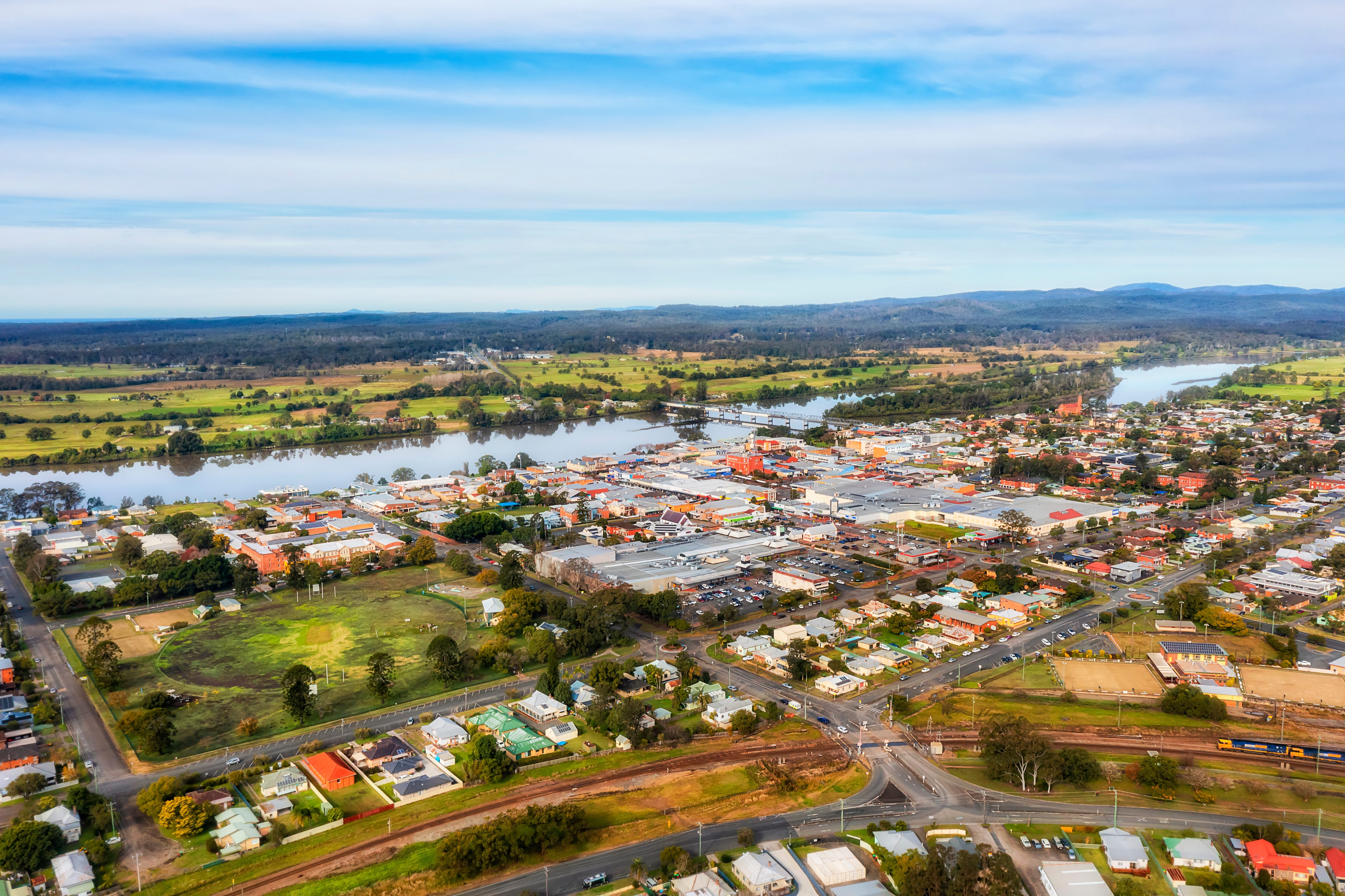Taree << tah REE >> (pop. 18,110) is a city in the Manning Valley of New South Wales, Australia. The city’s name is thought to come from an Aboriginal word for a local species of fig tree. Taree sits on the Manning River, about 10 miles (16 kilometers) from the river’s mouth. 

Important industries in Taree include dairy farming, forestry, and tourism. Taree is also known for its oysters, which are farmed in the river and surrounding waters.
The area around the Manning River is the traditional living space of the Biripi people. The Biripi people are Aboriginal people of eastern New South Wales. Europeans first reached the Manning Valley in 1819.
In 1831, British settler William Wynter received a grant for land near the Manning River. He named his property Taree Estate. A settler community grew around Crooked Creek, a tributary of the Manning River later known as Brown’s Creek. The village later became known as Taree.
During the mid-1800’s, Taree and the nearby towns of Cundletown and Wingham were important for regional industries such as shipbuilding and logging. Their docks were used to move goods along the Manning River to Sydney. Taree was named a municipality in 1885. The arrival of a railway line in 1913 increased the town’s trade and growth.
The Martin Bridge spans the Manning River at Taree. The bridge was completed in 1940, helping Taree’s population and commerce grow. Taree became a city in 1981.
Taree was seriously impacted by flooding in 2021 and 2022, caused by extreme rainfall in the area. The Manning River flooded on both occasions, resulting in significant property damage.
